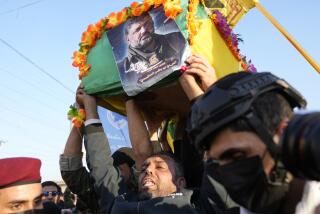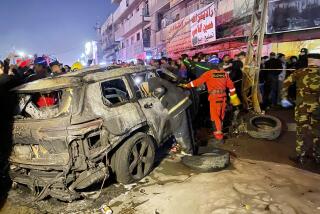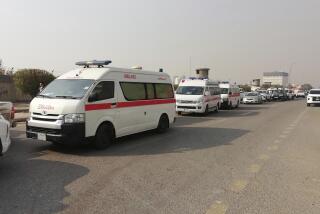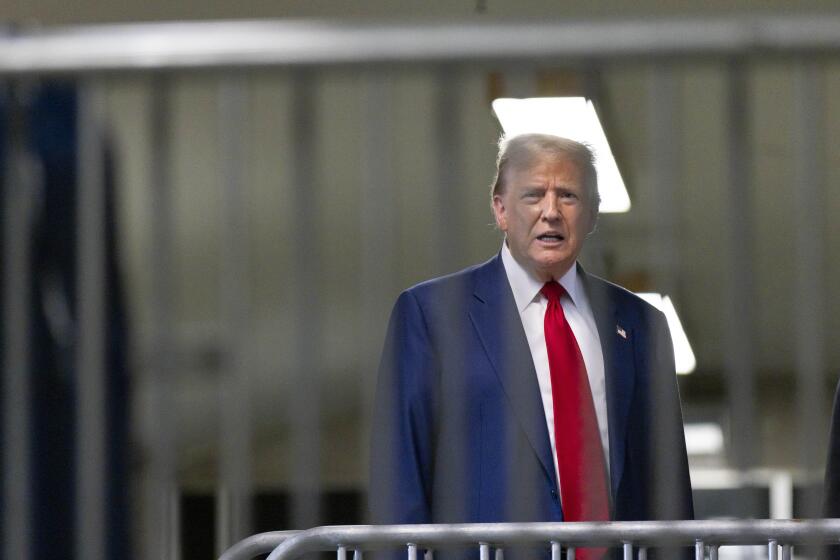Baghdadi’s death deals a heavy blow to ISIS after a 10-year manhunt

U.S. special forces in Syria carried out a successful operation in which Abu Bakr Baghdadi, the leader of the Islamic State militant group, died, President Trump announced Sunday.
The U.S. special forces operation in Syria that led to the reported death of Abu Bakr Baghdadi, the leader of the Islamic State militant group, brought to a close a manhunt that lasted nearly a decade and dealt a significant blow to a jihadi group known for its extremism and brutality.
President Trump announced the terror leader’s death in a televised statement Sunday from the White House, relishing the opportunity to taunt the deceased militant and declare victory over Islamic State, also known as ISIS.
“He was a sick and depraved man, and now he’s gone,” Trump said, vowing that the U.S. would “continue to pursue the remaining ISIS terrorists.”
“Last night was a great night for the United States and for the world,” Trump said. “He died like a coward, the world is now a much safer place.”
Baghdadi had a spectacular rise and fall in the violent world of Islamic extremism, forging elements of the Sunni insurgency against the U.S. in Iraq into Islamic State, which in 2014 conquered a swath of Iraq and Syria the size of Britain that he declared to be an Islamic caliphate. For more than two years, he ruled over some 12 million people, employing brutal, highly publicized killings, rapes of captive women and enslavement of non-Sunni minorities to enforce his theocratic brand of Islam.
Even before those conquests, Baghdadi had been among the world’s most-wanted men, hunted by the CIA and the intelligence services of Iraq and several of its neighbors. He eluded pursuit in part by stringent security procedures, seldom appearing in public and communicating even with his own followers only through intermediaries.
His death came when he detonated a suicide vest, killing himself and three children with him, according to Trump and U.S. military officials. It capped a U.S. commando raid Saturday in Syria’s Idlib province, in the northwestern part of the country.
No U.S. personnel were killed in the raid, Trump said. In addition to the three children, two women, believed to be wives of Baghdadi, also died in the raid, he said. An additional 11 children who survived the raid were turned over to local forces.
After reading his prepared remarks from a teleprompter, Trump stayed at the White House podium, taking questions during what ended up being a nearly 50-minute exchange with reporters. Trump revealed an extraordinary level of operational information about the raid — details normally withheld — with much of it aimed at driving home the argument that Baghdadi was not a powerful militant leader, but a weak and evil man.
“He died after running into a dead-end tunnel whimpering and crying and screaming all the way,” Trump said, adding that he watched much of the operation from the White House Situation Room as it took place.
It was “like a movie,” he said, describing Baghdadi being chased in the tunnel by one of the Army’s trained dogs and noting that the assault team brought a robot with them for pursuit, but didn’t use it because the operation moved too quickly.
“The thug who tried so hard to intimidate others spent his last moments in utter fear, in total panic and dread,” he said.
Asked if he actually heard Baghdadi whimpering on the video feed, Trump said, “I don’t want to talk about it.”
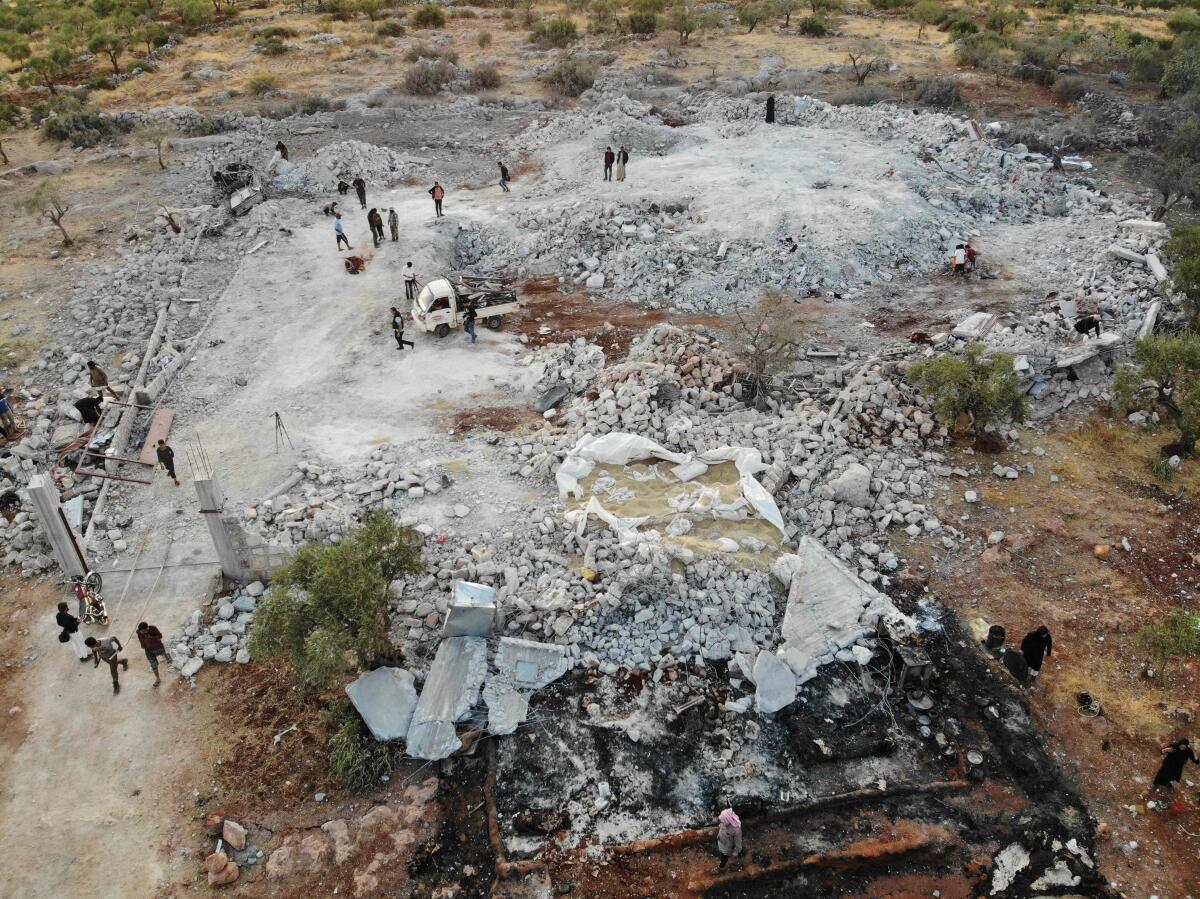
Defense Secretary Mark Esper, interviewed on several Sunday television programs, was far more tight-lipped than the president about the intelligence that led to the raid and the way it played out, but confirmed that the Islamic State leader had committed suicide by detonating an explosive vest after being pursued into a tunnel.
“The aim was to capture,” Esper said on CNN. “We tried to call him out and asked him to surrender himself. He refused.”
He notably did not vouch for Trump’s claim about the terrorist leader whimpering.
“I don’t have those details,” he said on ABC’s “This Week.”
Trump, who has been eager to withdraw U.S. forces from the Middle East, mixed his message with characteristic self-aggrandizement as he took credit for a mission that, he noted, was aided by regional allies.
“Bin Laden was big, but this was bigger,” he declared at one point, referring to the 2011 raid in which U.S. forces killed Osama bin Laden during former President Obama’s tenure. Bin Laden attacked the World Trade Center, but Baghdadi attempted to build a country, Trump said.
At another point he claimed, falsely, that in a book published in 2000 he had advocated killing Bin Laden long before anyone else had realized the importance of the Al Qaeda leader. By that point, Bin Laden had already been indicted by a federal grand jury on terrorism charges, was listed as one of America’s “most wanted” fugitives and had been the target of at least one unsuccessful U.S. military raid.

Trump’s rhetoric drew some immediate criticism, including from figures in his own party. Rep. Mac Thornberry (R-Texas), the senior GOP member of the House Armed Services Committee, said during an interview on CNN on Sunday that some of the remarks made him “uncomfortable.”
According to Esper, Trump gave the go-ahead for the raid on Thursday. U.S. forces had Baghdadi under surveillance for the “last couple of weeks,” Trump said, as the militant leader repeatedly changed his plans.
The leader of the Syrian Democratic Forces, the leading Kurdish militia group, which was aligned with the U.S. in the fight against Islamic State, said in a statement on Twitter that planning for the operation had been under way at least since early summer.
“For five months there has been joint intel cooperation on the ground and accurate monitoring, until we achieved a joint operation to kill Abu Bakir al-Bagdadi,” Gen. Mazloum Abdi wrote.
The raid involved U.S. commandos who arrived on scene in eight helicopters, flying over territory controlled by Turkey and Syria, Trump said. The commandos used explosives to enter the compound in which Baghdadi was located, he said.
The flight in was the most dangerous part of the operation, Trump noted. Trump declined to say where the helicopters took off from, but his description of the flight strongly suggested a base in Iraq.
The commandos were “met with gunfire,” but the opposing forces were quickly killed, Trump said. In addition to Baghdadi’s death, the raid also netted “highly sensitive material” that will be useful in tracking other militants, he said.
In the operation’s aftermath, regional allies of the U.S. — including Syrian Kurds, Iraq and Turkey — rushed to claim credit for helping U.S. commandos launch the attack. Trump said the raid was carried out with “cooperation” from Russia, Iraq, Turkey and Kurdish forces in Syria. The Kurds provided “information” that was helpful, he said.
The president, who has been under intense criticism from lawmakers in both parties in recent weeks for his withdrawal of U.S. troops from a different part of Syria — the Turkey-Syria border in the northeastern part of the country — teased the news Saturday night, tweeting, “Something very big has just happened!”
He released the tweet as soon as the U.S. troops landed safely, he said, but ordered his aides not to inform senior Democratic members of Congress. Typically, the congressional leadership is notified of such missions.
“Washington is a leaking machine, and I told my people we will not notify them until our great people are out,” he said.
Leaks happened anyway. Within minutes of Trump’s tweet, reports quickly began circulating that Baghdadi had been targeted in the raid and had died, but military officials could not confirm the death until they conducted DNA tests.
Trump said the identification was certain, based on an “on-site test” of body parts. The team conducting the raid included lab technicians, he said.
House Speaker Nancy Pelosi (D-San Francisco) sharply criticized Trump for keeping lawmakers in the dark, especially after he notified U.S. adversaries.
“The House must be briefed on this raid, which the Russians but not top Congressional Leadership were notified of in advance, and on the Administration’s overall strategy in the region,” Pelosi said in a statement. “Our military and allies deserve strong, smart and strategic leadership from Washington.”
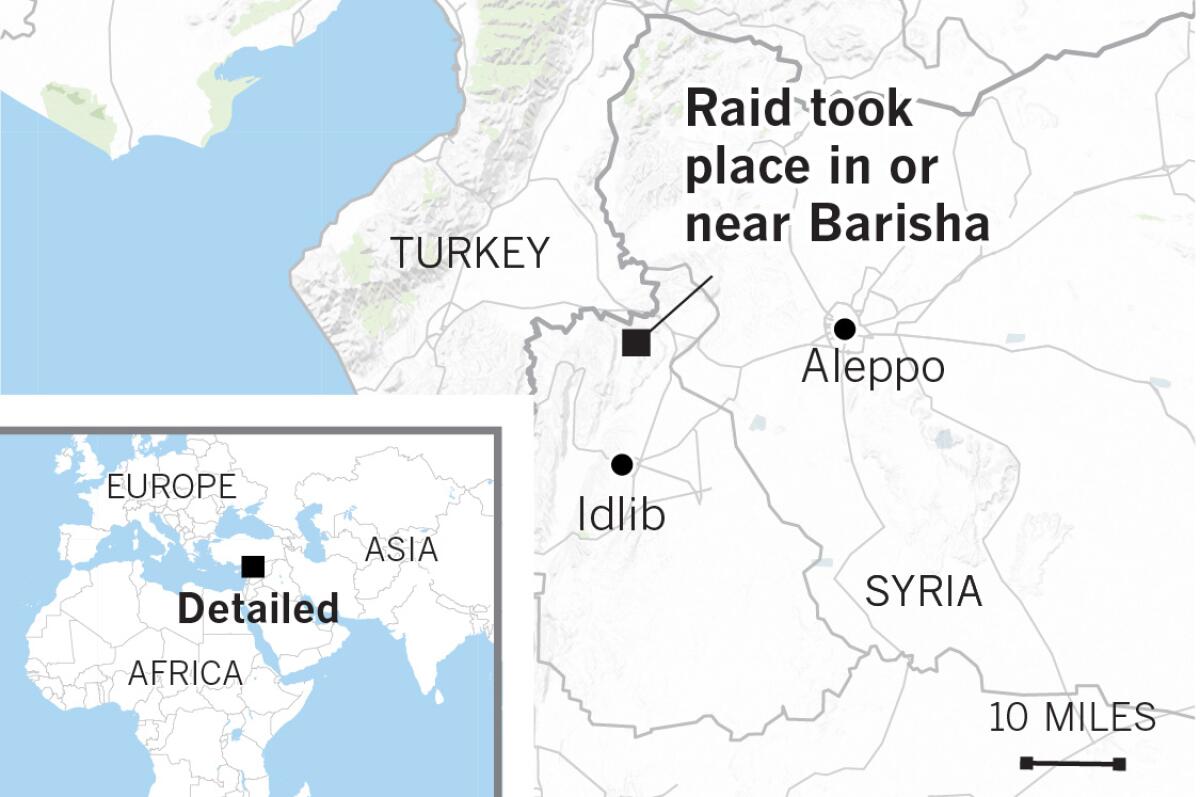
The raid took place in or near Barisha, a small town in northwestern Syria not far from the border with Turkey. The region lies some 250 miles west of the remote shadowlands of the Syrian-Iraqi border where Baghdadi was thought to have been hiding.
Syrian activists posted video on social media showing large explosions and the sound of small-arms fire in the Barisha area. In one video, the roar of warplanes is punctuated by a series of massive blasts. Another video shows some of the results of the attack: A cameraman walks in the village, filming the burned husk of a car as well as charred corpses.
Residents in the area contacted via the WhatsApp messaging service said explosions could be heard miles away. Some ran up to their rooftops, and saw tracer fire streaking during the firefight.
The area where the raid took place has long served as a conduit for ferrying people and war supplies across the border to and from Turkey.
The region is dominated by jihadist groups hostile to Islamic State, making Baghdadi’s presence there surprising. The radical Islamic group in that part of Syria fought pitched battles against Islamic State, which they saw as a rival, since 2013. The area also falls under the supervision of Turkish military observation posts.
Baghdadi, an Iraqi believed to be in his 40s, joined the Islamist insurgency against U.S. forces in Iraq following the 2003 invasion of that country. As a relatively low-level member of the insurgency, he was captured in 2004 and held for close to a year by the U.S. in the Abu Ghraib detention facility. He was released in late 2004, and rejoined the militants.
He was publicly declared the leader of Islamic State in 2010 and survived several attempts by the U.S. and its allies to kill or capture him. The chaos spread by Syria’s civil war allowed the group to take root in the eastern part of the country, along the border with Iraq, which provided a springboard for its sweeping conquests in 2014.
In 2015, under former President Obama, the U.S., working with the Iraqi government and Kurdish allies in Syria, began the effort to roll back Islamic State’s gains. An offensive to retake Mosul began in late 2016. The military continued that strategy under Trump, who declared in March that Kurdish militias allied with the U.S. had retaken the last of the territory that Islamic State had held.
Over the years Baghdadi has been reported killed several times -- each time resurfacing. The last known images of him came from a video released in April by Islamic State in which he exhorted militants to continue attacks on Western targets.
The group did not immediately confirm his death, which would be a major blow, although jihadi groups have repeatedly shown the ability to regroup after the deaths of their leaders. The group is believed to still command the loyalty of as many as 18,000 fighters in Iraq and Syria, U.S. defense officials reported recently.
Esper stressed that point in his appearances Sunday. Just because the militants no longer hold territory doesn’t mean they can’t take root again, he said, adding that the U.S. military has to “continually monitor” the situation.
“It’s hard to defeat an ideology,” he said. “So what we’re going to have to do is stay on top of this.”
In April, the militants released an 18-minute video in which a man identified as Baghdadi repeatedly praised the “steadfastness” of militants and said that although Islamic State had lost territory, “jihad is ongoing until the day of judgment.”
Last week as Trump took credit for a cease-fire between Turkey and Kurdish groups in northern Syria, the president’s special envoy for Syria, James Jeffrey, told lawmakers on Capitol Hill that at least 100 prisoners associated with Islamic State had escaped from detention camps that had been guarded by the Kurds and remained unaccounted for amid the intensified fighting in the region.
Stokols reported from Washington and Bulos from Beirut.
More to Read
Get the L.A. Times Politics newsletter
Deeply reported insights into legislation, politics and policy from Sacramento, Washington and beyond. In your inbox three times per week.
You may occasionally receive promotional content from the Los Angeles Times.
